HOLIDAY PET HAZARDS
Admin • December 14, 2017
Holiday time presents some situations which can be hazardous to your pet’s health. A little planning and taking extra precautions will keep the holidays a happy time for everyone.
Holiday food favorites can be dangerous for dogs watch out for “counter surfing” with food left on counters and serving areas. Fats, gravies and poultry skin can lead to gastrointestinal upset or worse pancreatitis. This inflammatory condition of the pancreas often requires hospitalized care and can be fatal. Keep trash where your pet cannot get to it. Food scraps and packaging can be delectable for your pet.

Alcoholic drinks especially eggnog is tempting along with rum cake. And unbaked bread dough undergoes fermentation in the stomach to produce ethanol and stomach distension.
Chocolate poisoning is a common problem with early symptoms being anxiety, agitation or vomiting. The darker the chocolate the more dangerous it is. Don’t keep wrapped boxes of chocolate under the tree – they will be opened by your dog.
If you have to share food, give canned pumpkin or raw or cooked sweet potato, carrots or green beans without added oils. Grapes, raisins and currants are toxic for some dogs. Be careful with peanut butter as it is high in fat and some peanut butters now have a natural sweetener called Xylitol added. Xylitol causes a dog’s blood sugar to become low and possibly liver failure. Only 2 ounces of Xylitol containing peanut spread can be toxic for a 25 pound dog. Xylitol is also used in sugar-free gum, baked goods and candies often labeled as “sweetened naturally” or “naturally sweetened.”
It doesn’t take much for a climbing cat or excited dog to knock the Christmas tree over, so make sure it is secured. A tight fitting tree skirt can prevent your pet from drinking the tree’s water. Foil around the base can discourage cats. Double-sided cellophane tape or citronella spray at the tree base will discourage cats from climbing. Avoid ornaments made from food such as salt/dough ornaments and popcorn strings. Watch for and remove any broken ornaments. Be careful with holiday lights as they are usually not insulated well and so are easily chewed through. Burn marks at the lips or tongue or respiratory distress are signs of electrocution. Tinsel and curling ribbon should be avoided completely especially with cats.
Poinsettia is only mildly toxic; holly, mistletoe, and Amaryllis more so with more severe stomach upset. Lilies are particularly worrisome in cats with eating only one or two leaves or flower petals causing kidney failure.
Potpourri liquid or scented oils simmered in a pot are particularly attractive to cats and are poisonous due to the essential oils and cationic detergents they contain.
While your medications are safely stored away, house guests may leave theirs in plastic bags in open suitcases. More common now is marijuana in plastic bags. If there is marijuana in the house, your dog will find it. No drug sniffing training needed here.
Lastly, one that you may be unfamiliar with is snow globes. They can contain ethylene glycol (antifreeze). If you drop and break one, the liquid could be quickly licked up because it tastes sweet. Ethylene glycol ingestion can cause kidney failure. Proceed immediately to your veterinarian if this occurs.
For some cats and dogs, the bustle of the holiday season with visitors and increased household activity can be stressful. Providing a comfortable, quiet place to retreat to can help and also prevent unnoticed escapes out the door. If your pet is particularly upset by houseguests, then your veterinarian can help with possible solutions.
If you suspect that your pet has been exposed to a “holiday hazard”, call your local veterinarian immediately or call Pet Poison Helpline at 855-213-6680 or ASPCA Animal Poison Control Center at 888-426-4435 (fee for both). Early treatment can prevent a serious or fatal condition.
It doesn’t take much for a climbing cat or excited dog to knock the Christmas tree over, so make sure it is secured. A tight fitting tree skirt can prevent your pet from drinking the tree’s water. Foil around the base can discourage cats. Double-sided cellophane tape or citronella spray at the tree base will discourage cats from climbing. Avoid ornaments made from food such as salt/dough ornaments and popcorn strings. Watch for and remove any broken ornaments. Be careful with holiday lights as they are usually not insulated well and so are easily chewed through. Burn marks at the lips or tongue or respiratory distress are signs of electrocution. Tinsel and curling ribbon should be avoided completely especially with cats.
Poinsettia is only mildly toxic; holly, mistletoe, and Amaryllis more so with more severe stomach upset. Lilies are particularly worrisome in cats with eating only one or two leaves or flower petals causing kidney failure.
Potpourri liquid or scented oils simmered in a pot are particularly attractive to cats and are poisonous due to the essential oils and cationic detergents they contain.
While your medications are safely stored away, house guests may leave theirs in plastic bags in open suitcases. More common now is marijuana in plastic bags. If there is marijuana in the house, your dog will find it. No drug sniffing training needed here.
Lastly, one that you may be unfamiliar with is snow globes. They can contain ethylene glycol (antifreeze). If you drop and break one, the liquid could be quickly licked up because it tastes sweet. Ethylene glycol ingestion can cause kidney failure. Proceed immediately to your veterinarian if this occurs.
For some cats and dogs, the bustle of the holiday season with visitors and increased household activity can be stressful. Providing a comfortable, quiet place to retreat to can help and also prevent unnoticed escapes out the door. If your pet is particularly upset by houseguests, then your veterinarian can help with possible solutions.
If you suspect that your pet has been exposed to a “holiday hazard”, call your local veterinarian immediately or call Pet Poison Helpline at 855-213-6680 or ASPCA Animal Poison Control Center at 888-426-4435 (fee for both). Early treatment can prevent a serious or fatal condition.

There is currently a confirmed local outbreak of H3N2 canine influenza. Reports of influenza cases began around 01/10 and significantly increased in number 01/15. Cases have been reported primarily from San Jose, Campbell and Sunnyvale. The H3N2 strain of influenza Type A was first seen in the U.S. in Chicago in 2015. The virus is highly contagious and dogs can have mild symptoms that may be mistaken as so called “kennel cough” or more severe symptoms resulting in fever and pneumonia.

Inflammation within the joints, osteoarthritis , is common in dogs with about 20% suffering the effects. It is a slowly evolving disease with development of joint pain, stiffness and limitation of motion. The most common cause is abnormal stresses on normal cartilage. Even tiny imperfections in the joints can lead to mechanical breakdowns and the resultant inflammation. The progression of the disease can be affected by body weight, amount of exercise and genetic influences. The first symptom is loss of normal performance followed by stiffness after rest that usually lasts only a few minutes. Next, quality of life is affected – decreased exercise tolerance, not getting in or out of the car without help and decreased activity. These problems are frequently blamed on the pet’s increasing age. Progressive disease leads to lameness of a sudden or slow development. In some dogs there may be behavioral effects of joint discomfort including nervousness, aggression, depression and loss of appetite.

Superficial shell abscesses and erosions, or shell rot as it is often called, is a common problem in aquatic chelonians. The keratin scutes that cover the bony shell develop defects or develop dark, pale or pink discolorations. The problem usually occurs as a result of infrequent water changes, lack of a filtration system, filtration system not cleaned and/or too low an environmental temperature.
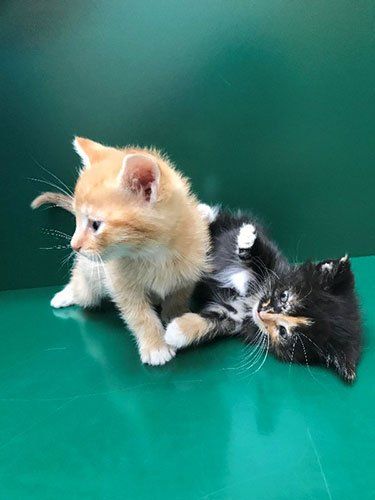
Miramonte Veterinary Hospital has been working with various rescue organizations to help kittens/cats and the occasional rat or rabbit find their permanent home. We do not receive any support or funding but do this as our contribution to the community. Kittens ready to go to their new home: Lemon Meringue: ~ 8 weeks old, male, castrated Chocolate Banana Cream: ~ 8 weeks old, female, spayed
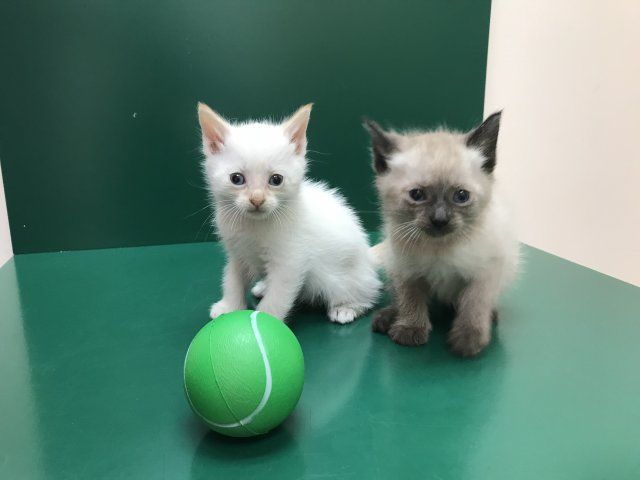
Miramonte Veterinary Hospital has been working with various rescue organizations to help kittens/cats and the occasional rat or rabbit find their permanent home. We do not receive any support or funding but do this as our contribution to the community. Kittens ready to go to their new home: Coconut Cream: ~ 8 weeks old, male, castrated Chocolate Mousse: ~ 8 weeks old, male, spayed
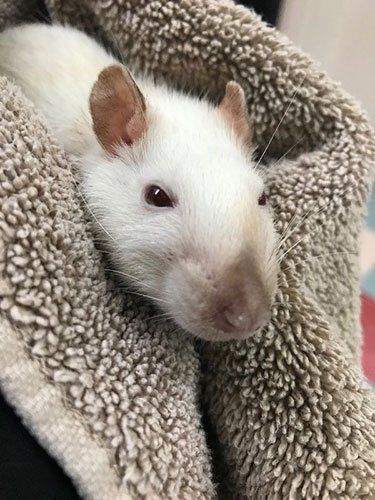
Miramonte Veterinary Hospital has been working with various rescue organizations to help kittens/cats and the occasional rat or rabbit find their permanent home. We do not receive any support or funding but do this as our contribution to the community. Vanilla Bean is a female rat who has been spayed. She loves to sit on your lap. She is ready to be yours!
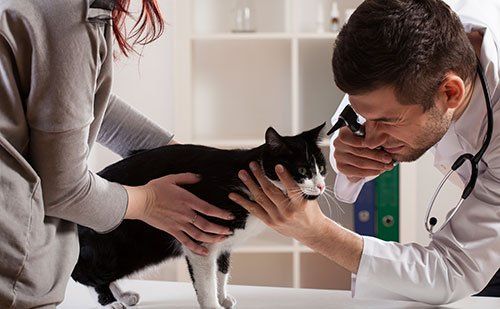
Few problems can be as frustrating for pet owners (and veterinarians) to deal with as allergies. For dogs and cats the itchy feeling can cause severe irritation and self-mutilation. Treating allergies can be as simple as an effective flea control. However, in severe cases obtaining complete control of allergies can be elusive and necessitate multiple treatments. It is almost always a lifelong problem and can be expensive to control.
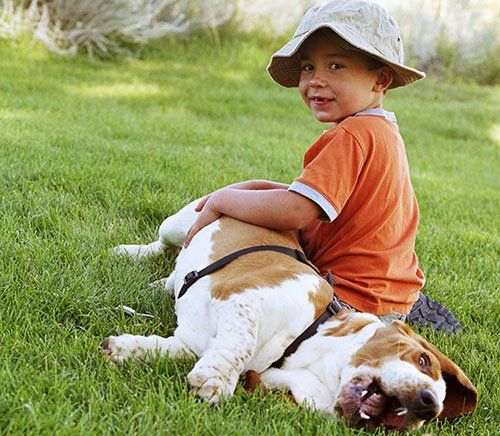
The weather here is as perfect as it gets for being outdoors at any time of day and any day of the year. So when warm weather comes the effects on our pets can come as a surprise especially on a midday hike in the hills or traveling to a warmer area. The effects of heat stroke can come quickly and mortality is 50%. Heatstroke occurs when the body is generating more heat that it can get rid of. Short-nosed breeds of dogs, obese dogs, older dogs and those with upper airway or heart disease have more difficulty regulating body temperature. Nervous and excitable dogs along with those being excessively exercised are also at risk. Signs of heat stroke may begin with excessive panting and appearing distressed and becoming restless. Large amounts of saliva may come out of the mouth and/or nose. Weakness and difficulty in standing may then occur and you may notice gums looking bright red or purple/blue.
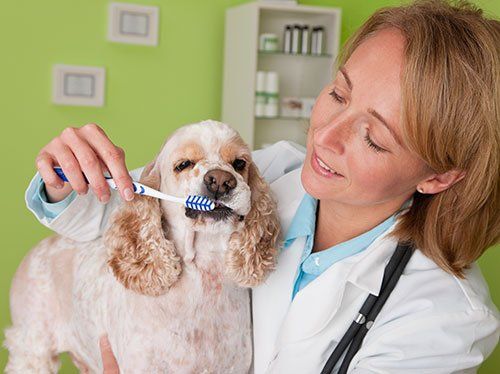
Well-meaning pet owners can be quite surprised when their pet requires multiple tooth extractions when they have regularly had non-professional dental scaling done. The primary reason is that removal of dental tartar on the visible surfaces of the teeth is not enough. The effect is purely cosmetic. Tartar under the gum line within the gingival pocket can only be removed under anesthesia and left on the teeth will contribute to periodontal disease. Periodontal disease starts with inflammation of the gums (gingivitis) and can lead to periodontitis which is loss of the tooth supporting tissues. Most small breed dogs have periodontal disease by 3 years of age. Untreated dental disease especially where extractions are needed is painful for your pet. Many times pet owners have commented on how much more active and engaging their pet is after dental treatment.






